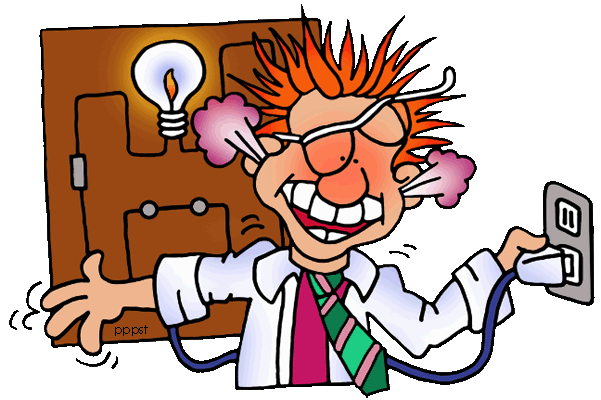Introduction:

Electric circuits form the backbone of our modern technological world. Understanding how electric circuits work is essential for anyone interested in electrical engineering, electronics, or even just using everyday devices.
In this brief guide we will explore the fundamental concepts and principles behind electric circuits, enabling you to grasp their inner workings.
Here we have a video created by my son, who's studying physics
Basics of Electric Circuits:
Electric Current: Electric circuits involve the flow of electric charges, usually in the form of electrons. This flow of charges is known as electric current. Current is measured in amperes (A) and can be compared to the flow of water through a pipe.
Voltage: Voltage represents the electrical potential difference between two points in a circuit. It is measured in volts (V). Voltage is what drives the electric charges to move and determines the strength of the electric current.
Resistance: Resistance refers to the opposition encountered by electric current as it flows through a material. It is measured in ohms (Ω). Components called resistors are used to regulate and control the flow of current in a circuit.
Components of an Electric Circuit:

Power Source: A power source, such as a battery or a power supply, provides the voltage necessary to establish a flow of electric charges. It acts as the energy reservoir of the circuit.
Conductors: Conductors are materials, usually metals like copper or aluminum, that allow electric charges to flow freely.
They serve as the pathways for the current to travel through the circuit.
Resistors: Resistors are components that introduce resistance into a circuit. They control the amount of current flowing through a specific part of the circuit. Resistors can be found in various devices, such as light bulbs and heating elements.
Capacitors: Capacitors store and release electric charge. They consist of two conductive plates separated by an insulating material. Capacitors are commonly used in circuits for storing energy and filtering signals.
Inductors: Inductors are components that store energy in a magnetic field. They are made of coils of wire and are used in circuits to control the flow of current and store energy.
Switches: Switches are control devices that can open or close a circuit. They allow users to control the flow of current and turn devices on or off.
Circuit Analysis and Laws:
Ohm's Law: Ohm's Law relates voltage (V), current (I), and resistance (R) in a circuit. It states that the current flowing through a conductor is directly proportional to the voltage applied and inversely proportional to the resistance encountered. Mathematically, Ohm's Law is expressed as V = I * R.

Series and Parallel Circuits:
Series Circuits: In a series circuit, components are connected one after another along a single path. The same current flows through each component, and the total resistance is the sum of the individual resistances. If one component fails or is removed, the entire circuit breaks.
Parallel Circuits: In a parallel circuit, components are connected side by side, creating multiple paths for current flow. The voltage across each component is the same, while the total current is the sum of the currents through each component. If one component fails,the other components can still operate independently, as the circuit remains intact.
Practical Applications:
Lighting: Electric circuits are used extensively for lighting applications. Light bulbs, fluorescent lamps, and LEDs all rely on electric circuits to convert electrical energy into light energy, brightening our homes, streets, and workplaces.
Electronics: Electric circuits are the foundation of electronic devices that we use daily, such as smartphones, computers, and televisions. These devices contain complex circuits that process information, transmit signals, and perform various functions.
Power Distribution: Electric circuits enable the transmission and distribution of electrical power from power plants to our homes, schools, and industries. They ensure efficient and safe delivery of electricity over long distances.
Renewable Energy Systems: Electric circuits play a vital role in harnessing and utilizing renewable energy sources like solar panels and wind turbines. These circuits convert the captured energy into usable electricity.
Conclusion:
Electric circuits provide the framework for the functioning of numerous devices and systems that surround us. By understanding the basic principles of electric circuits, you can unravel the mysteries of electricity and gain the knowledge to analyze, design, and troubleshoot circuits effectively.
Whether you pursue a career in electrical engineering or simply want to have a deeper understanding of the technology you interact with daily, grasping the fundamentals of electric circuits will empower you to explore and innovate in this electrifying field.
